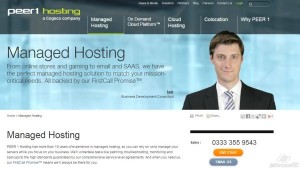
In the world of digital marketing, it seems that every week presents a new tool which marketers can use to engage with their audience. But in all of the excitement surrounding innovation, it is also important to remember your trusted tools which deliver consistently strong results. For a lot of businesses, this is email marketing.
But how do you know if your email marketing is working well? You need to have a good knowledge of email analytics, or how you measure your email marketing performance. Here is a guide to the key metrics and how to improve them.
Delivered Rate:
- What is it? If you send your email to 100 people, it is unlikely that all 100 people will receive it. There are all sorts of reasons for this, but the key one is likely to be your email getting caught in a spam filter. Not getting very strong deliverability means that your campaign has fallen at the first hurdle.
- How to improve it? You should avoid obviously spammy words (“f r e e”, “cheap”, using all capitals, etc.), not send your email to too many recipients at the same time (send in smaller batches instead), and avoid poor quality HTML – these not exhaustive, but a good starting point.
Open Rate:
- What is it? Once your email gets delivered, the next stage for the email to go through is to be opened. Getting your email opened is important, but it doesn’t tell you how long the recipient spent looking at the email or other measures.
- How to improve it? There are a couple of factors which influence open rate. The first is the name of the sender of the email, normally the first thing that the recipient sees. If this is recognised or welcomed, chances are that the email will be opened. The next factor is the subject line – the format will depend on your business, market and audience, but it should be short, punchy and enticing enough to encourage opening.
Click Through Rate:
- What is it? The point of sending most marketing communications is to encourage the recipient to take some sort of action. This action may well be to click through to a landing page. This is a good indicator at the level of engagement in your email, although other measures such as forward rate (the number of people who sent your email onto a contact of theirs) may apply.
- How to improve it? This is all about the content of your email, which is dependent on your business and audience. Ad a general rule, the content should be relevant, personalised where possible, have a clear call to action and be optimised for mobile.
Opt Out Rate:
- What is it? This is the rate at which your audience have taken the step to not receive your emails anymore. This is often a demoralising experience for email marketers, but there are lots of reasons why it could happen: the important question is why.
- How to improve it? To find out why someone has unsubscribed from your email marketing, you should ask them! When they unsubscribe, take them to a page which confirms the action has taken place and ask them to select an option which applies best to the reason for opting out. Not everyone will answer, but those that do will offer an insight.
In addition to this, you should also measure your on-page analytics: when someone clicks on a link in your email, how do they behave, do they bounce out of the site, etc. Doing this is a blog post in itself, but spend some time in your analytics package to find out more.
You should also find a means of benchmarking your campaign. You may be lucky enough to find some research on the web which shows your industry benchmark, but in the absence of that, you should start benchmarking your own campaigns against each other – do bear in mind that the audience group should be similar to have a fair comparison.
Image via verticalresponse.com
(266)








